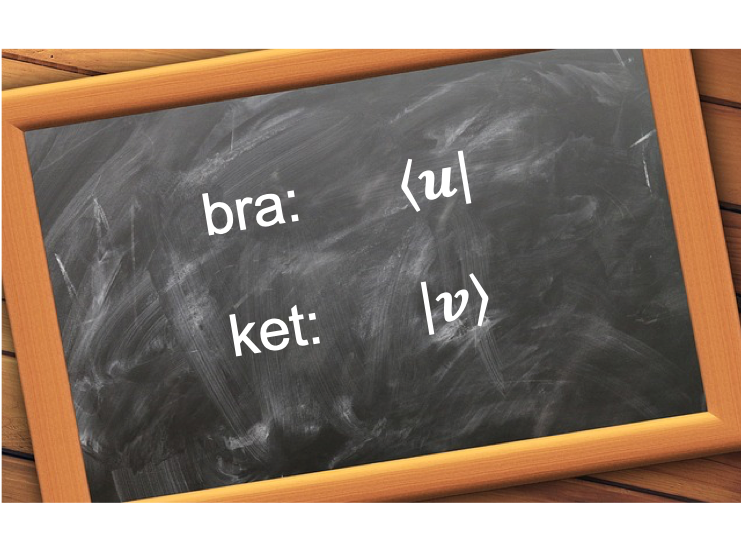The Dirac bra-ket notation is a concise way to represent objects in a complex vector space .

A ket, denoted by , is a vector
. Since a linear operator
maps a vector to another vector, we have
.
A bra, denoted by , is often associated with a ket in the form of an inner product, denoted by
. If a ket is expressed as a column vector, the corresponding bra is the conjugate transpose of its ket, i.e.
. The inner product can therefore be written as the following matrix multiplication:
or in the case of functions:
Since a linear operator acting on a ket is another ket, we can express an inner product as:
where .
If , then
is the expectation value (or average value) of the operator
.
As mentioned above, bras and kets can be represented by matrices. Therefore, the multiplication of a bra and a ket that involves a linear operator is associative, e.g.:
You can verify the above examples using a 2×2 matrix with complex elements to represent the operator acting on a vector in . The three examples reveal that:
-
produces another ket.
results in another bra. This is because
, where
is a scalar; and if
, the only possible identity of
is a bra.
, which is called an outer product, is an operator because
, i.e.
maps the ket
to another ket
. In other words, the operator
transforms the vector
in the direction of the vector
, i.e.
projects
onto
.
- The product of two linear operators is another linear operator:
.
